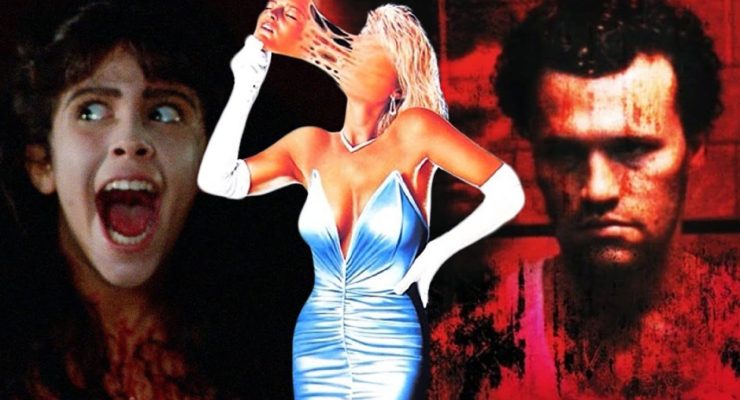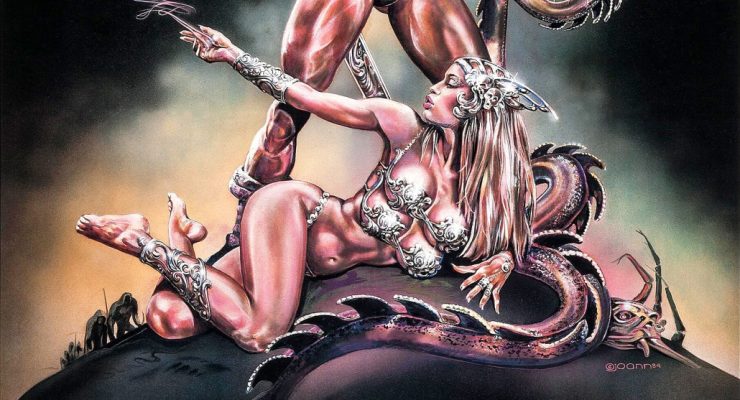The Tale of the Princess Kaguya, 2014.
Directed by Isao Takahata.
Featuring the voice talents of Chloë Grace Moretz, James Caan and Mary Steenburgen (English)/Aki Asakura, Kengo Kora and Takeo Chii (Japanese).
SYNOPSIS:
A girl is born of the bamboo trees, and she is brought up to be a Princess …
During the Studio Ghibli season at the BFI last year, for the first time, I watched Grave of the Fireflies. Powerful, profound and deeply moving, I was in awe that this was from the same studio that brought us Ponyo and My Neighbour Totoro. Lest we forget, there are two key artists behind Studio Ghibli: the surrealist, playful and obsessed-with-blustery-winds-and-planes Miyazaki, and the sombre, heartfelt vision of Isao Takahata. It is the latter who directs The Tale of the Princess Kaguya – and it is one of the finest films of 2014, balancing profound truth with dreamlike fantasy.
Based on a Japanese folk tale, The Tale of the Bamboo Cutter, The Tale of the Princess Kaguya begins as a small princess is found within a growing stick of Bamboo. Initially a mini-human, once she is returned to his home, she immediately becomes a fast-growing baby. Nicknamed ‘Lil’ Bamboo’ by local boys, her Father is adamant that she’s referred to as ‘Princess’. Indeed, to her family this is who she is. The bamboo reveals stunning fabrics and gold, enough for the adoptive mother and father to give Kaguya a lifestyle limited to only the most affluent. But this leafy lifestyle is changed dramatically when they move out of their small, rural homeland and into a luxurious mansion, complete with a hired stylist who ensures Kaguya looks the part of the Princess. Set in the Heian era, this expectation includes blackened teeth and plucked eyebrows – a far call from the lush forest and playful animals of her childhood. And, to make matters more complicated, she is also expected to find a suitor.
This mere synopsis fails to showcase the weight and gravity of each moment. Kaguya is the precious daughter of bamboo cutters and so it is clear that the story is soaked in allegory. Like all parents, they want only the best, and give up everything for her. But we know that her happiness is found in nature. In running, and jumping, and playing in the fields and valleys. Her growth, as a child, spurted significantly in these surroundings, while her entire period in the palace is static. Creatively, the story is accessible and fun for children, but it’s poignant and challenging for adults too. Your offspring growing up so fast; the conflict between accepting what your child wants and desperately trying to shape him or her in your own image; the moment you confront the brevity of life.
Crucially, The Tale of Princess Kaguya proves, once again, how the wonderful animation of Studio Ghibli cannot be surpassed. A run through fields becomes fuzzy, scratched and disconnected. Lines are messy and expressive while the stylistic watercolours are left unfinished, akin to My Neighbours the Yamadas. Opposed to the digitised animation of Pixar and Dreamworks, or even the hard, bold colours in established cartoons, The Tale of the Princess Kaguya adores painterly motion, with clear brush strokes and tonal adjustments that openly address the use of material. A long film, running over two-hours, breezes by, and you’d have to have a heart of stone not to shed a tear in the final moments. A glorious, unforgettable cinematic achievement.
The Tale of the Princess Kaguya was playing as part the BFI’s weekly Family Film. They will soon be screening Emil and the Detectives, Basil the Great Mouse Detective and Spy Kids in the coming weeks, with a wide selection over the half-term weekend.
Flickering Myth Rating – Film: ★ ★ ★ ★ ★ / Movie: ★ ★ ★ ★ ★
Simon Columb – Follow me on Twitter
https://youtu.be/8HTiU_hrLms?list=PL18yMRIfoszFLSgML6ddazw180SXMvMz5











